- It’s What We Do
- Toby Price
- 14 Days In Northern Thailand
- Neck Braces
- Timor-Leste
- Ol’ Mate
- Coping With A Dunking
- Cameron Corner
- Landlocked In Laos
- Triumph Tiger 800XCx
- Shop Bike
- How To Ride with Miles Davis
- Can’t Judge A Book By Its Cover with Karen Ramsay
- Media Release With A Catch
- Preparing For Adventure with Robin Box
- Readers’ Ride: Victorian High Country
- FUSA
- Reader’s Pic
- Video Winner
- Adventure Film Festival
- Checkout
- Contributors
Still the same happy, down-to-earth bloke.

After a mind-blowing podium finish and stage win in his first Dakar earlier this year, Toby Price, 27, from Maitland NSW, has shot to international motorsport stardom. That’s not a mindless cliché. Toby, possibly the happiest, nicest bloke in motorcycling, is now poised to begin a serious international career in the fast-growing, elite world of motorcycle rallye. You wouldn’t know it to chat to him over a coffee in a busy northern NSW café, though. He’s remarkably unaffected by the fame. When we last spoke to the KTM star he’d just collected his third Finke win. This time we were able to listen to his thoughts on an even bigger result.
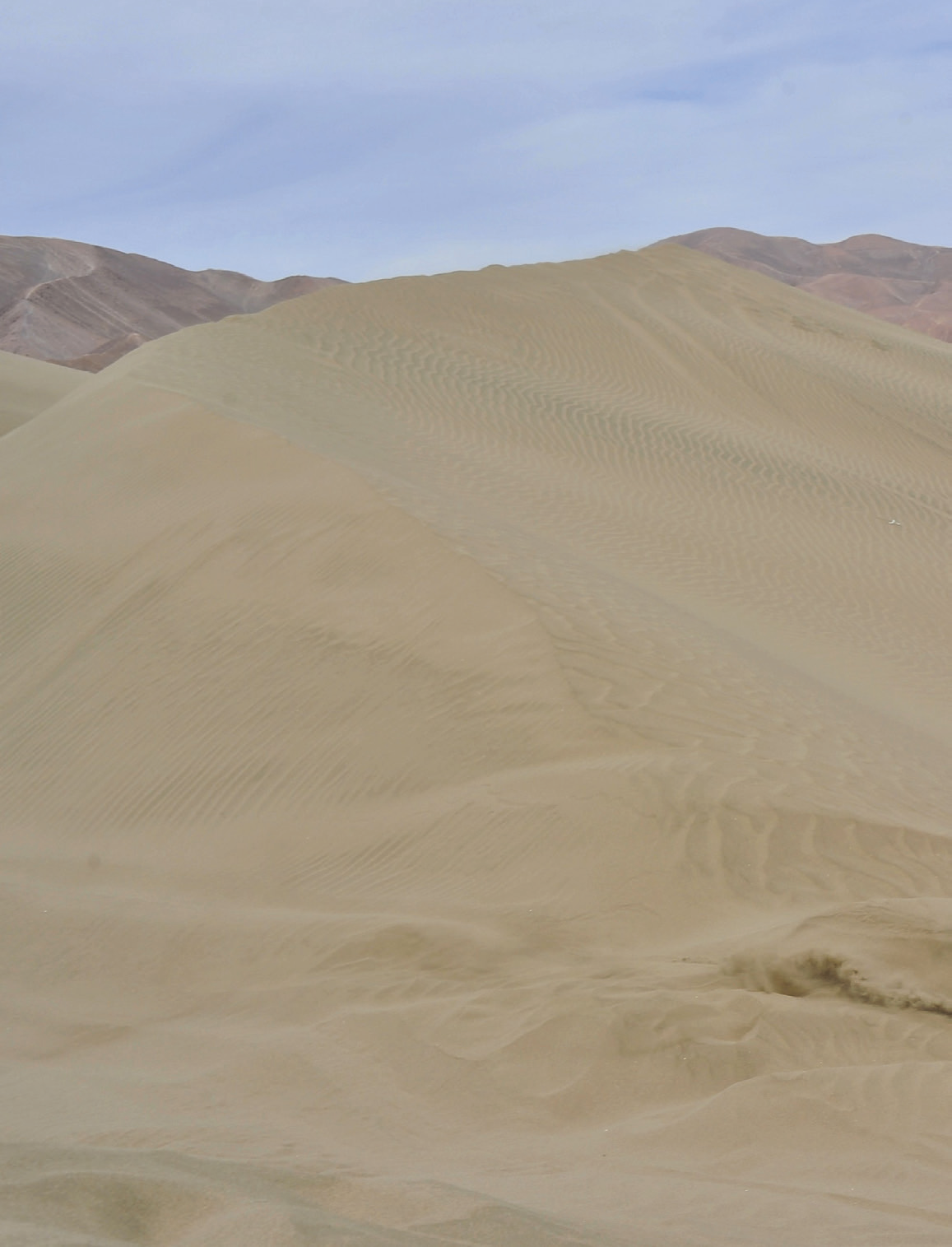
AdvR: When we last spoke you were hopeful a Dakar ride might be in your future. Now you’ve finished third in your first Dakar. How did it all come about?
TP: Basically, Ben Grabham, team owner here in Australia, put me in touch with Alex Doringer, the manager of the KTM rallye team in Austria, and it all fell into place at the last minute.
They offered me a ride in the Morocco rallye, just to see if I liked the sport and that style of racing. I had a couple of rough days, but it all went well.
That was my very first rallye ride, so I wasn’t expecting too much, but we finished eighth and I loved it. So we worked out a deal to get to Dakar.
AdvR: That was October and Dakar kicks off in the first week of January. It didn’t give you a lot of time to adjust to the idea.
TP: Definitely not.
There wasn’t a lot of time to prepare and there wasn’t a lot of time to practice or train. Dakar was the second rallye I ever competed in. I’d only had a week experience with Marc Coma in Spain, six days in Morocco doing the race there, and I trained two days in America with a good friend, Quinn Cody.
Then I came back to Australia and did nothing until I went to Dakar. I didn’t know what to expect, and I didn’t know what I was getting myself into.
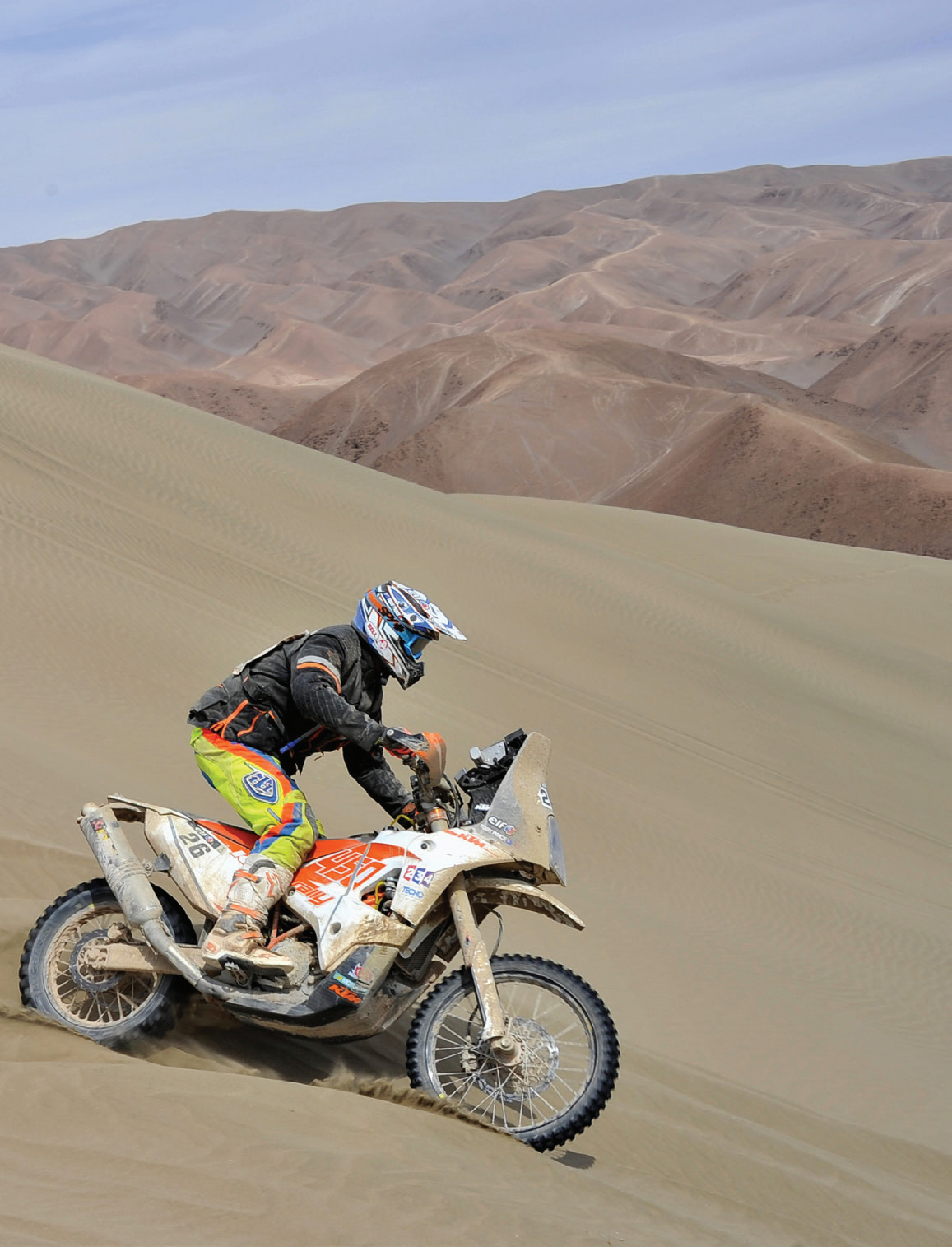
AdvR: Did you have to qualify to enter Dakar? Was Morocco part of that?
TP: No. Anyone can enter Dakar as long as they have the big dollars needed to do it. Morocco was just a trial run to see if I liked the actual event and doing the navigation while riding.
It’s definitely something interesting and different.
AdvR: You started with a stock bike, but finished with something a little more advanced. How did that come about?
TP: That’s right.
The first week in the Dakar I had the same bike I rode in Morocco, which was a stock-standard KTM 450 rallye bike.
If anyone in the world wanted to buy a KTM rallye bike and have it in their garage, what they would get sent in the box is what I was riding.
We ran the bike in and all I changed was the clickers on the suspension. I didn’t know what type of terrain we were going into and I didn’t know what I was in for. It might’ve been that the bike felt great where I was riding and practicing, but 20km out in the first stage it might’ve felt like crap. So I didn’t make a big fuss. The main thing KTM wanted me to do was go there, learn and get the experience.
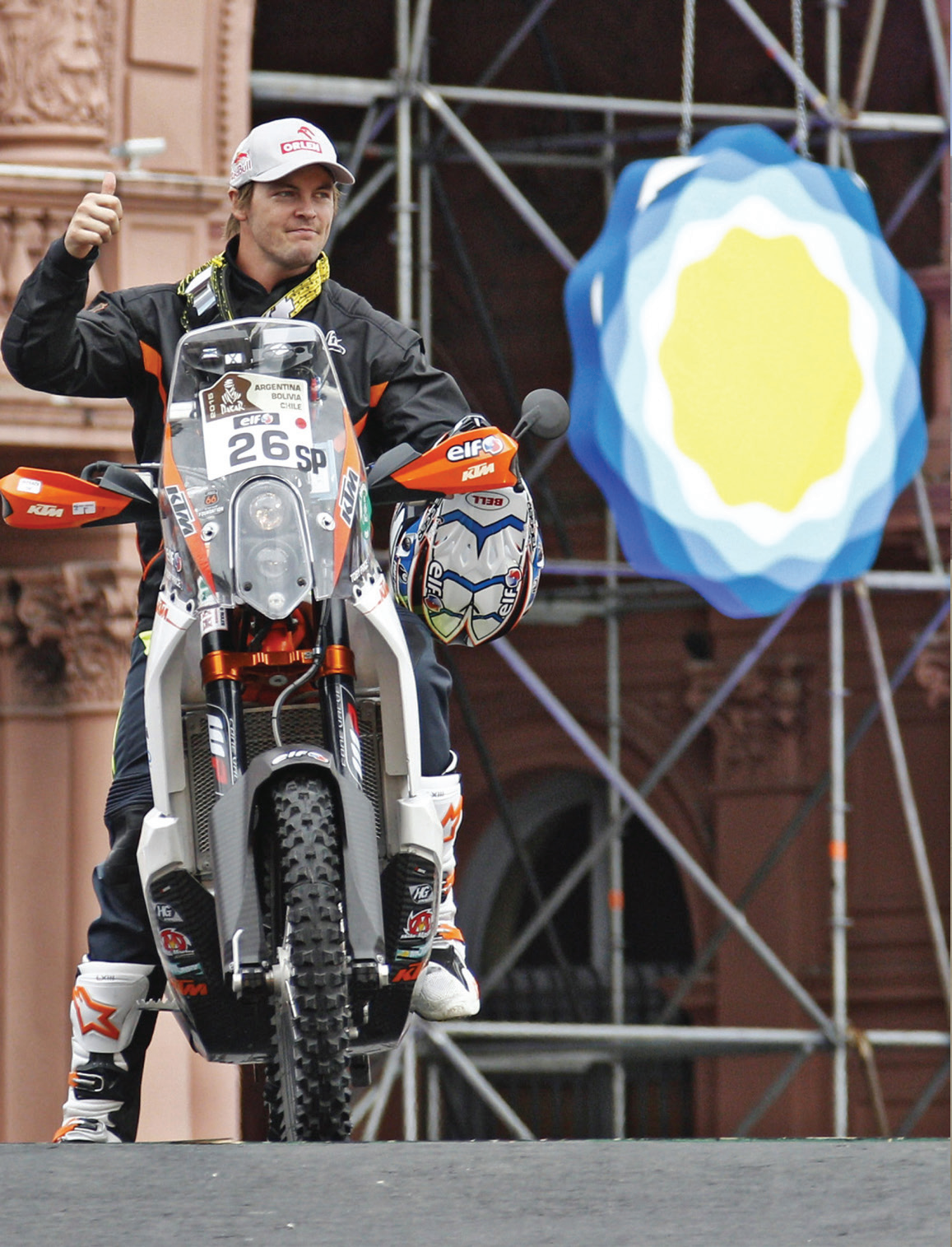
As the days went on I just kept plodding along and not making massive mistakes and not going too crazy, and I found myself in top 10 and top 20 positions.
Unfortunately, for my bike to get upgraded, it meant other riders on the team had to drop out. Sam Sunderland lost a lot of time on the second day and then he crashed. I think he injured his shoulder on day four or day five. So from there, after he’d dropped out of the event, I got his forks and shock. It made a humongous difference. It just made the bike handle so much better, and I could get through the rough stuff just a little bit easier.
Suspension was the thing I most wanted upgraded, but while all the team’s riders are running it’s hard to do. The team only has what it can carry, and that’s just enough for each bike.
Then when Jordi Viladoms had bike problems from the salt pan day – that day destroyed a lot of bikes – I got some motor parts. The team didn’t tell me specifically what the parts where, but I could feel the difference. There was a little bit more power and a clutch cover that had an oil line.
They were the two main upgrades. It was a bit like playing a video game where you go and collect coins along the course and then you can go to the shop and start buying parts to upgrade your ride.
AdvR: You’re carrying some fairly serious injuries these days, but you’re in good shape at the moment and your fitness level generally is very high. How did you find the physical and mental challenge of Dakar?
TP: My fitness is good, but my fitness can always be better.
While the event was actually running it wasn’t so bad. At the end of every day I was a bit sore and I had a few strains here and there. The KTM team had a physio that worked on me each night if I had sore or tight areas and he made things a little easier for me.
Each day you run off five or maybe six hours sleep. The way your body recovers is while you sleep, so if you don’t get much sleep it doesn’t recover too much.
Each day at the finish line I’d feel a bit sore, but as the race goes on you fall into a rhythm – more like a robot, really.
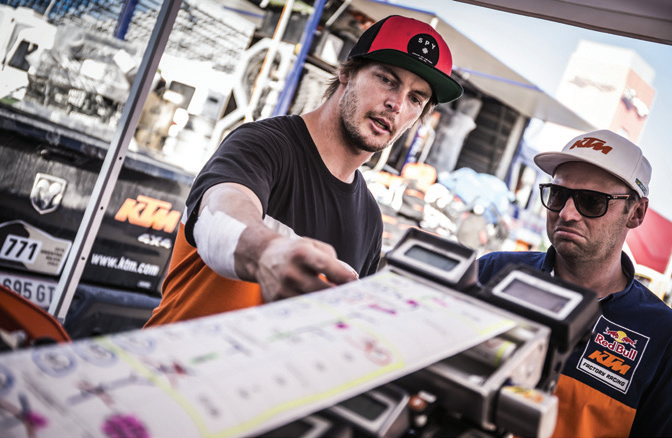 Alex Doringer (right), KTM’s rallye team manager, financed Toby’s 2015 Dakar. Discussions are under way for the 2016 campaign
Alex Doringer (right), KTM’s rallye team manager, financed Toby’s 2015 Dakar. Discussions are under way for the 2016 campaign
AdvR: Talk us through a typical race day.
TP: You’d wake up usually between 2.30 and 3.00am and get a bit of breakfast, usually some leftovers from the night before – maybe some pasta. There was definitely no toast and cereal and Weetbix (laughs).
Some days you’d be on the bike at 3.00am and sometimes you’d have until 4.00am. It might be a 300km liaison – transport – to get to the first special for the day, so that’s how early you have to leave.
I think the earliest finish I had was about 4.00pm. Sometimes it might be 5.00pm, depending on the day.
When you got back you’d eat some food to try and get energy back into you, then jump in a shower.
After that was two to three hours with your head buried in the roadbook, marking it and painting it so you’d know when you had to make your turns and so forth.
Rider’s briefing was usually at 8.00pm, so you’d spend probably 30 minutes or so there.
After that we’d spend 30 minutes to 45 min-utes in a camper van that had Google Maps of the next day’s course. That was so we could try and see what we were in for.
Before you knew it it was 10.00pm or 10.30pm and you climbed into bed to do it again the next day.
They’re big, long days, and they’re flat out and crazy.
AdvR: What advantages did you have over a full-on privateer?
TP: I was a little better off.
The KTM guys got me a spot in a camper van. I didn’t have to tent it, and that in itself is a big plus. You have the comfort of a campervan to mark your roadbook. You’re not in a tent getting covered in dust, getting rained on, coping with the 45-degree heat some days and five degrees at night…it’s definitely a big bonus.
As far as the bike goes, I think at the start of the race there were probably privateers who had a better bike than me, but at night I didn’t have to spin my own spanners, and I had access to basic parts like spare levers from the team truck. I had access to the physio as well, but really the biggest advantage was the other team riders. Just getting their back-ground and knowledge of where we were going and what we were heading into, the terrain and conditions, that was a massive advantage for me. Guys who just rock up there on their own can’t get that, and having those guys in my corner definitely fast-tracked a few things for me and helped a lot.
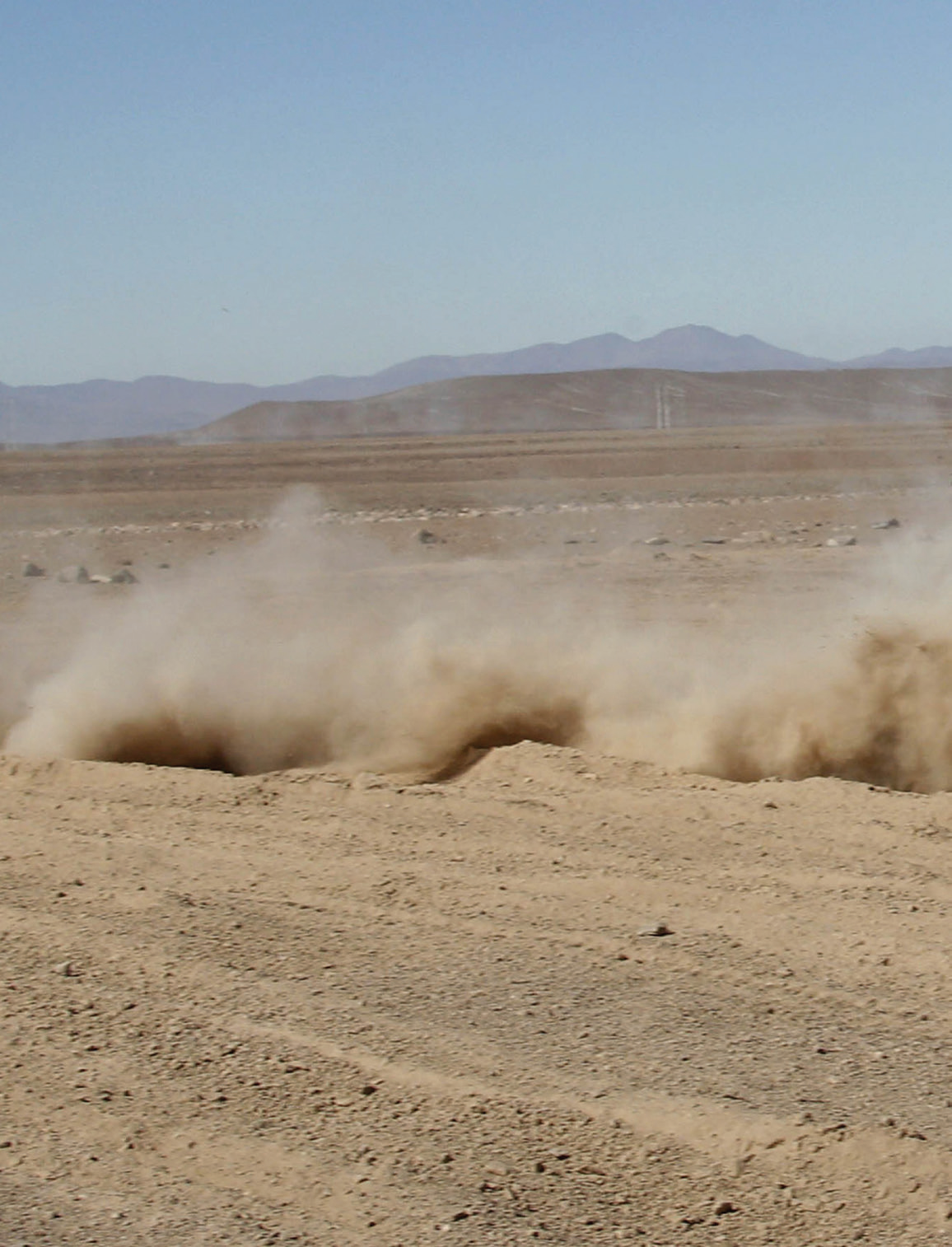
AdvR: Talk us through a typical race day.
TP: You’d wake up usually between 2.30 and 3.00am and get a bit of breakfast, usually some leftovers from the night before – maybe some pasta. There was definitely no toast and cereal and Weetbix (laughs).
Some days you’d be on the bike at 3.00am and sometimes you’d have until 4.00am. It might be a 300km liaison – transport – to get to the first special for the day, so that’s how early you have to leave.
I think the earliest finish I had was about 4.00pm. Sometimes it might be 5.00pm, depending on the day.
When you got back you’d eat some food to try and get energy back into you, then jump in a shower.
After that was two to three hours with your head buried in the roadbook, marking it and painting it so you’d know when you had to make your turns and so forth.
Rider’s briefing was usually at 8.00pm, so you’d spend probably 30 minutes or so there.
After that we’d spend 30 minutes to 45 min-utes in a camper van that had Google Maps of the next day’s course. That was so we could try and see what we were in for.
Before you knew it it was 10.00pm or 10.30pm and you climbed into bed to do it again the next day.
They’re big, long days, and they’re flat out and crazy.
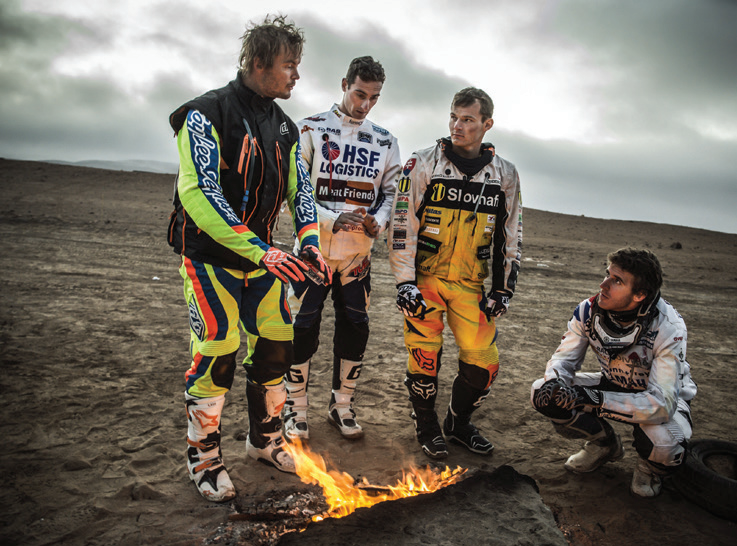
AdvR: What advantages did you have over a full-on privateer?
TP: I was a little better off.
The KTM guys got me a spot in a camper van. I didn’t have to tent it, and that in itself is a big plus. You have the comfort of a campervan to mark your roadbook. You’re not in a tent getting covered in dust, getting rained on, coping with the 45-degree heat some days and five degrees at night…it’s definitely a big bonus.
As far as the bike goes, I think at the start of the race there were probably privateers who had a better bike than me, but at night I didn’t have to spin my own spanners, and I had access to basic parts like spare levers from the team truck. I had access to the physio as well, but really the biggest advantage was the other team riders. Just getting their back-ground and knowledge of where we were going and what we were heading into, the terrain and conditions, that was a massive advantage for me. Guys who just rock up there on their own can’t get that, and having those guys in my corner definitely fast-tracked a few things for me and helped a lot.
AdvR: What was a high point of Dakar for you?
TP: The high point was just finishing the event.
Now I can look back and say I’ve completed a Dakar. And to just sit there and look at a piece of Dakar history, a third-place trophy, is amazing. It’s hard to put into words how special it is.
Just getting to the finish line in Dakar is a win in itself. Whether you finish first or ninetieth, when you cross that finish line after 9500km, it doesn’t matter about your position. You know what you’ve been through. You’ve been torturing yourself pretty damn bad and just to get to the finish line is unreal.
Getting the stage win on the second-last day was a high point, too. For sure.
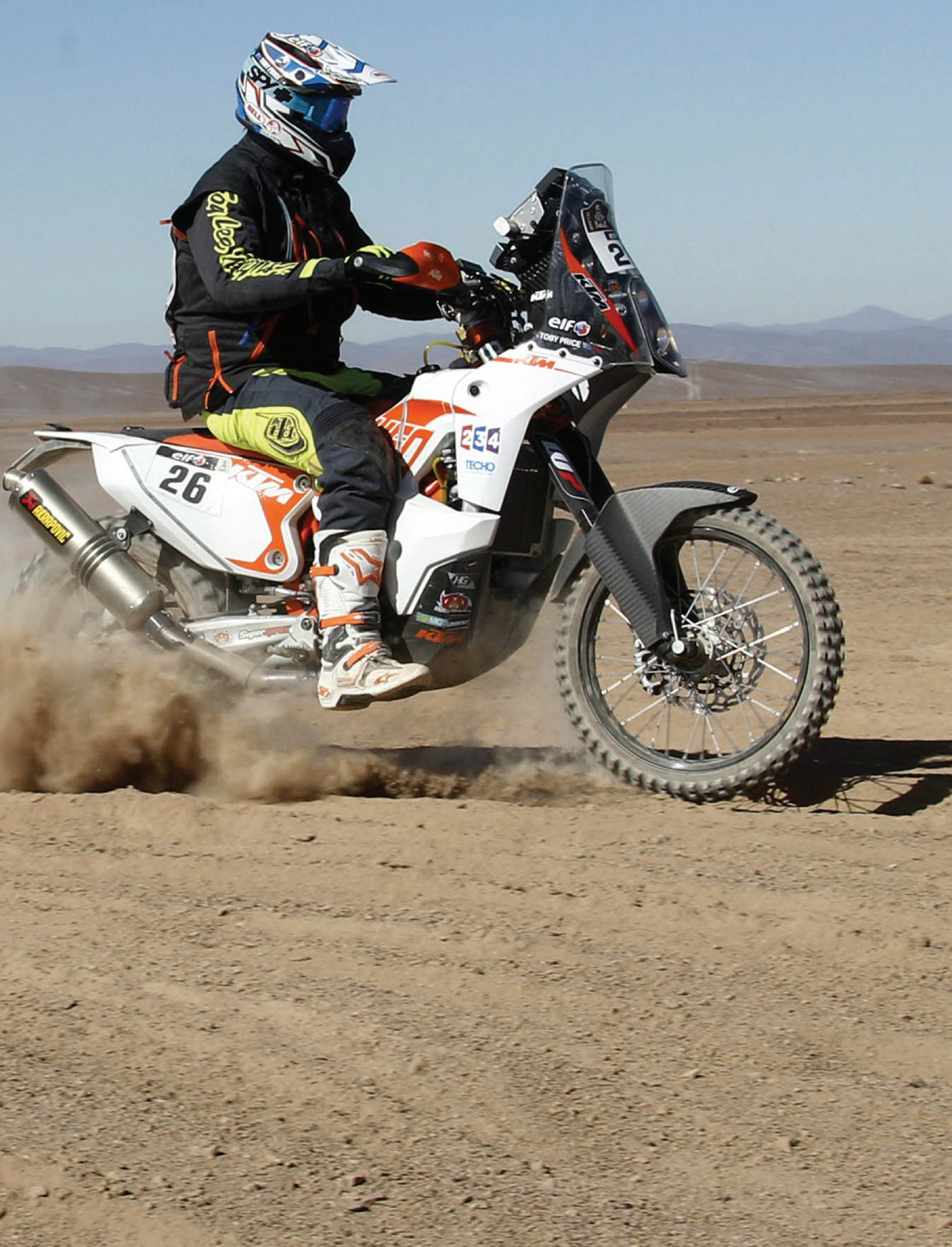
AdvR: What was the toughest part of the event?
TP: The whole lot of it was tough.
It was all new to me. I didn’t know what I was going in for and that made it tough for the whole event. The Dakar’s been in South America since 2007 or 2008, and some of those guys know that area. They go there and practice and train, the same way I go to practice and train at Finke. They know the areas and they have some knowledge. I went in blind.
The navigation’s tough, too. It’s a hard thing to get on top of. The maps are in French. I can barely speak and read English (laughs), so it’s hard to get all that dialled. I know my outright speed is definitely fast and I can put it to those guys, but trying to mix that speed with navigating makes it really difficult. As soon as you take your eyes off the road and look at that roadbook you’re putting yourself in 99 per cent danger of ending up on the ground. You won’t have seen what you hit or know what you did or where you went wrong.
That’s the way it is. You’ve just got to do it.Physically, I guess probably the second day when it was 45 degrees was tough.
I know it gets hot here in Australia too, but when you’re lugging around a bike that’s maybe 180kg, and you’re going through sand dunes and trying to get through as quick as you can, it’s a lot of hard work.
And then there’s altitude.
Everything about the race just takes its toll on the body. There’s always a mix of things making it physically hard. You’re always trying to breathe deep to get some air into your body, and as you climb the temperature drops from 45 degrees to 12 degrees. The bike won’t run because there’s just not enough oxygen.
On the coast the bike feels perfect. As you climb it ends up feeling like a KTM50.
Your body just gets put into shock every day. It doesn’t know what it’s going through, that’s for sure.
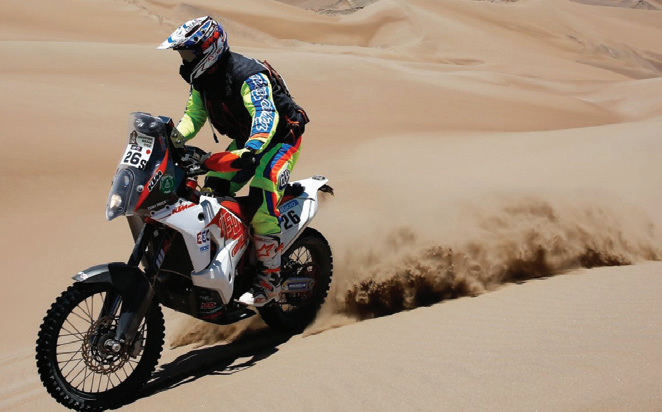 “Your body just gets put into shock every day. It doesn’t know what it’s going through, that’s for sure.”
“Your body just gets put into shock every day. It doesn’t know what it’s going through, that’s for sure.”
AdvR: How’s the reaction been in Australia now you’re a superstar?
TP: (Laughing) I’ll never see myself as some-thing like that!
I ride a dirt bike for a job and I try and do the best I can every time, but the response from here in Australia about Dakar has been overwhelming.
It’s crazy. I’ve lived in the Newcastle area for something like 12 years now, but since I’ve been home I’ve had sometimes 10 people a day come up and say, “Congratulations on Dakar!” A lot of the people who come and say that don’t look like they have anything to do with motorcycles. The wide range of people who’ve come up said, “Well done,” is amazing.
People do the same in Sydney. Sydney’s a big area! Just to get noticed even once there is pretty cool.
It just shows people understand it was something pretty special.
AdvR: If you go back next year you’ll have a yellow numberplate. Tell us what that means.
TP: A yellow background means like a ‘seeded’ rider.
If one of the factory guys or one of the frontrunners – those with yellow numberplate backgrounds – has a drama, like perhaps getting lost for two hours or something like that, they’re automatically reseeded back into the top 20.
This year I had a problem and dropped back to 68th. If I hadn’t ridden back through the field, 68th would’ve been my starting position the next day. I would’ve been in a hell made up of dust. With a yellow numberplate, 20th is as far back as you can go. It takes a bit of pres-sure off if you’re having a bad day.
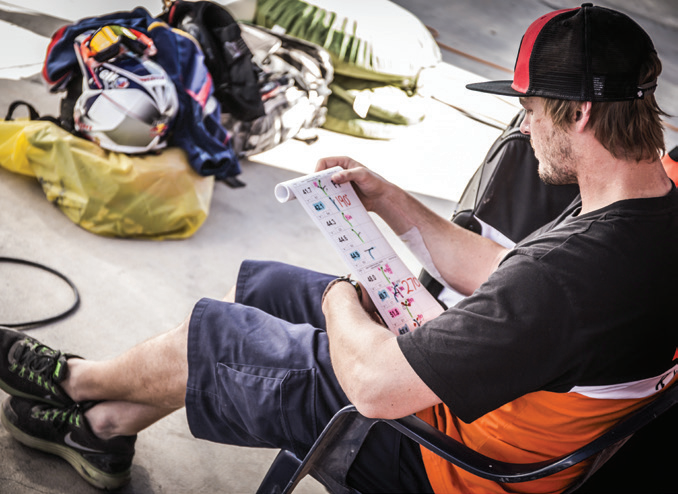 Every night two to three hours are spent marking and reviewing the roadbook.
Every night two to three hours are spent marking and reviewing the roadbook.
AdvR: What about the level of team support for next year. Do you know where that’s up to?
TP: I’d love it to be a full factory ride!
But I’m not too sure what the plans are yet. We’re in talks. I definitely want to go back to Dakar. I definitely wouldn’t want to go back next week and go through it all again (laughs), but in 12 months time when it rolls around again I’ll be looking forward to it.
I’m pretty sure with a third-place result we should be able to seal a deal to go back, but whether or not it’ll be a full factory thing, or maybe a factory bike but in my own colours, or I might even have to source sponsors here in Australia to put on the bike to cover some costs.
This year I was lucky enough to have Alex Doringer’s support. He’s the manager of the KTM rallye team, and he footed the whole bill.
AdvR: After standing on the podium at a World Championship event, how does it feel to be racing back in Australian domestic competition?
TP: I’m looking forward to it!
Every race is something different and special in its own way. The main goal is always to win races. Being on that top box is what I’m paid to do.
Just to have my Dakar trophy to show some people and let them hang onto a bit of Dakar history – there’s only two of those trophies in Australia, so they’re pretty rare – and seeing everyone at the races and mingling with everyone and seeing fans and people that followed me and supported me the whole way through…that’s the big bonus for me.
Just to say ‘thank you’ to everyone.
 “I know my outright speed is definitely fast.”
“I know my outright speed is definitely fast.”
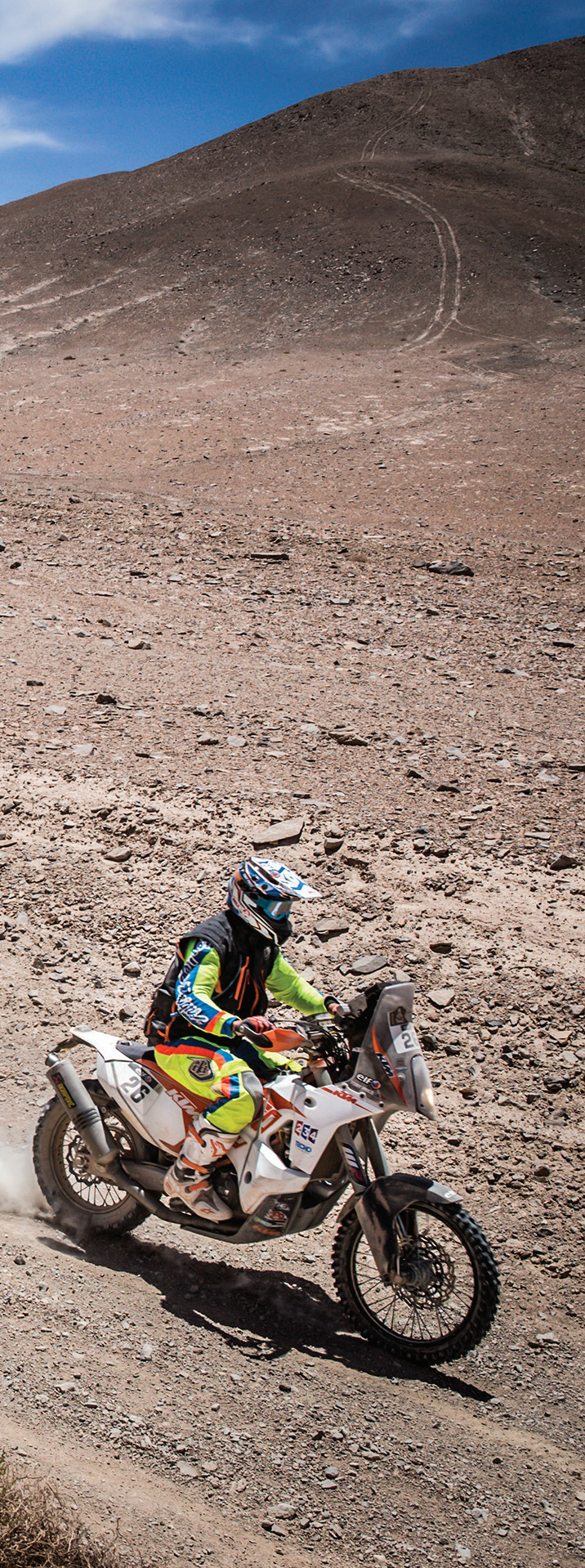



















Comments